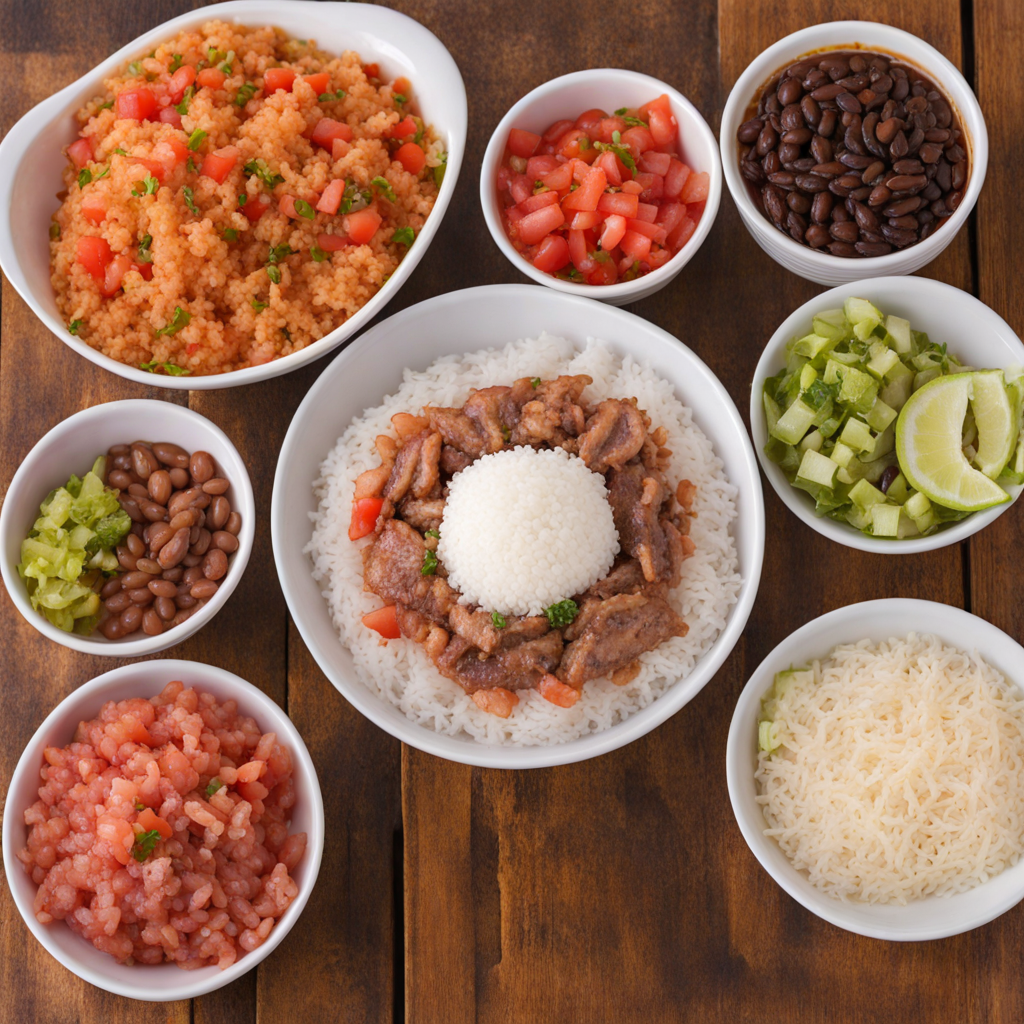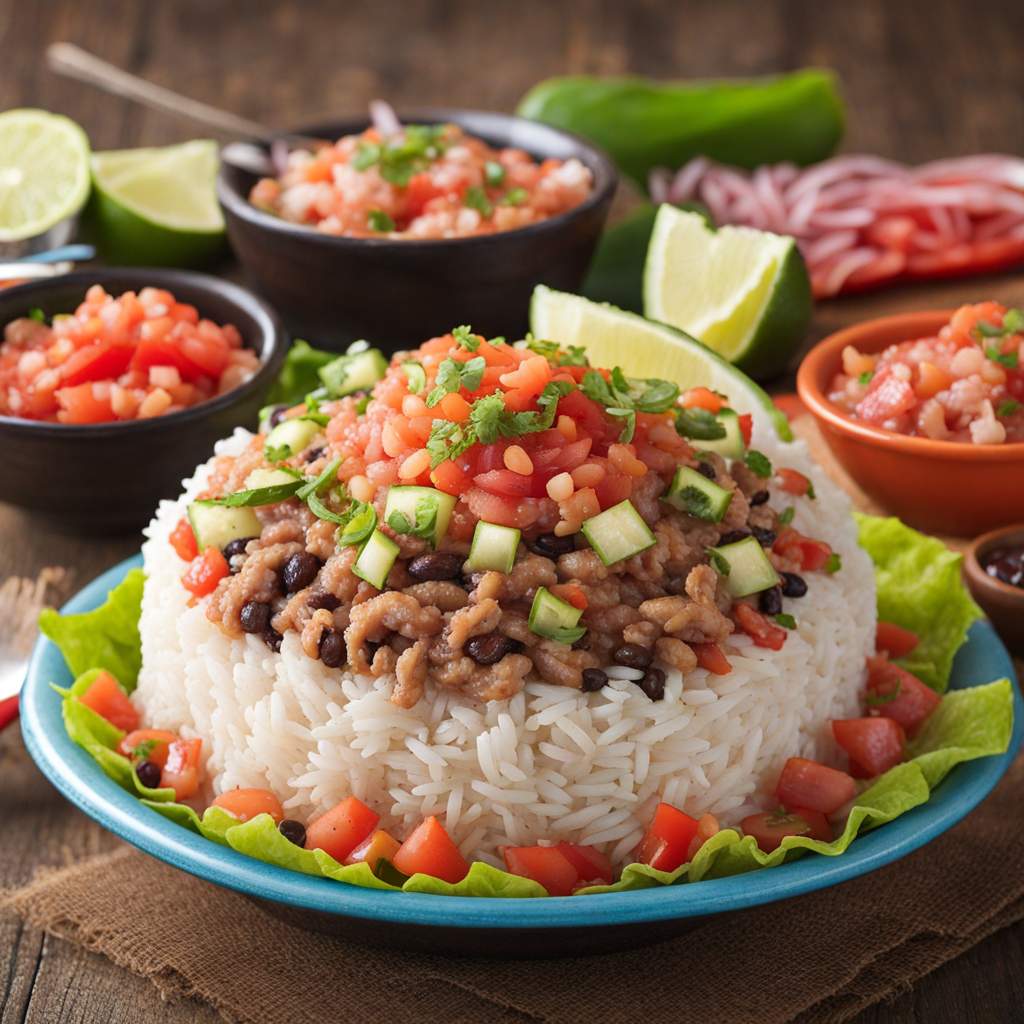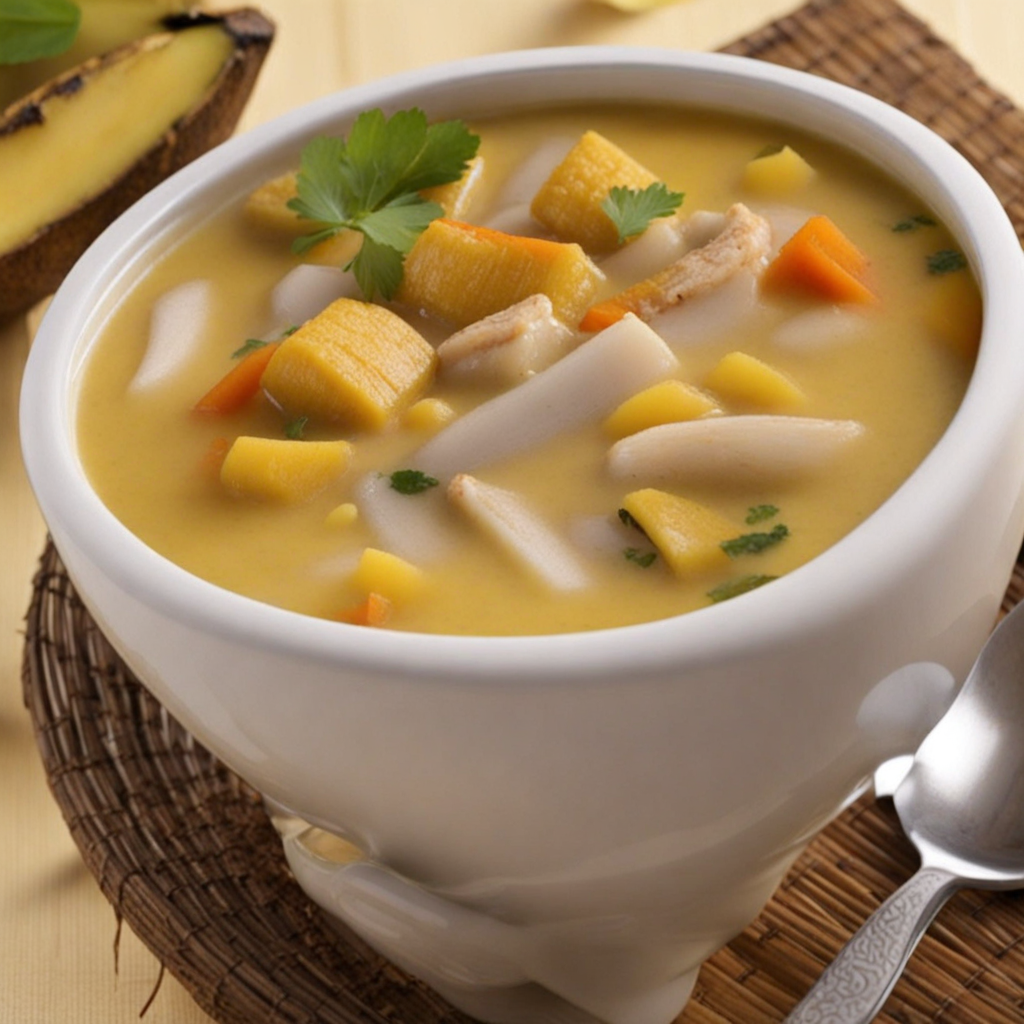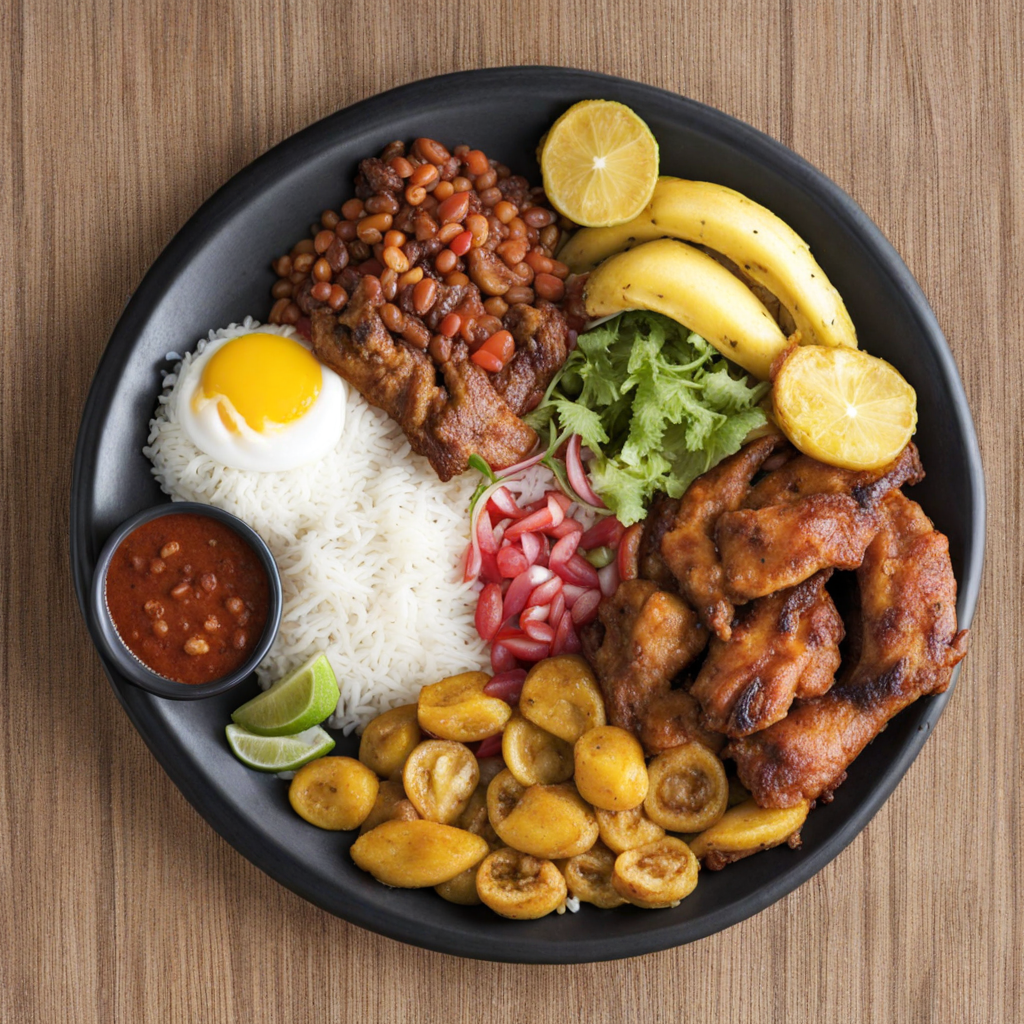Chifrijo
Chifrijo is a delightful Costa Rican dish that combines the rich flavors of rice, beans, and fried pork, creating a hearty and satisfying meal. At its core, the dish features a base of fluffy white rice and savory red beans, which are typically seasoned with spices to enhance their natural flavors. The highlight, however, is the crispy fried pork, known as "chicharrón," which adds a wonderful crunch and a burst of umami that elevates the entire dish. This combination not only offers a comforting texture but also a symphony of flavors that reflect the vibrant culinary traditions of Costa Rica. Traditionally served in a bowl, Chifrijo is often garnished with a zesty pico de gallo made from fresh tomatoes, onions, and cilantro, providing a refreshing contrast to the richness of the pork and beans. Additionally, a drizzle of hot sauce or a squeeze of lime can be added to give the dish a vibrant kick. Chifrijo is typically enjoyed as a snack or appetizer, but its filling nature makes it a great option for a light meal as well. It's the perfect dish for those looking to experience the lively and comforting tastes of Costa Rican cuisine. As you dig into Chifrijo, the combination of textures and flavors creates an exciting taste experience. The creamy beans meld beautifully with the fluffy rice, while the crispy chicharrón brings in a delightful crunch. This dish is not just about sustenance; it's a celebration of local ingredients and culinary heritage. Whether enjoyed at a local eatery or made at home, Chifrijo promises to take your taste buds on a journey through the heart of Costa Rica.
How It Became This Dish
Chifrijo: A Culinary Journey Through Costa Rica In the vibrant tapestry of Costa Rican cuisine, few dishes capture the essence of local flavors and culture quite like chifrijo. This hearty, satisfying dish is a delightful fusion of ingredients that reflects not only the agricultural bounty of the region but also the social dynamics and culinary practices of its people. To understand chifrijo is to delve into the history, culture, and evolution of a dish that has become emblematic of Costa Rican dining. Origins of Chifrijo Chifrijo's roots can be traced back to the late 20th century in the city of San José, though its exact origins are somewhat shrouded in culinary folklore. The dish is believed to have emerged in the 1980s, during a time of significant cultural and social change in Costa Rica. The term "chifrijo" is a portmanteau of two words: "chicharrón," which refers to crispy fried pork belly or pork cracklings, and "frijoles," meaning beans, specifically the red beans commonly used in Costa Rican cuisine. The creation of chifrijo is often attributed to the need for a comforting, affordable dish that could be enjoyed in informal settings such as "sodas" (small family-run eateries) and bars. It became particularly popular among the working class and was often consumed as a late-night snack or a hearty accompaniment to drinks. This accessibility contributed to its rapid rise in popularity, making it a staple of the Costa Rican culinary scene. Cultural Significance Chifrijo is more than just a dish; it embodies the spirit of Costa Rican social life. The combination of flavors and textures—savory chicharrón, creamy avocado, zesty pico de gallo, and hearty rice and beans—creates a communal food experience. It is often served in large bowls, meant to be shared among friends and family, fostering a sense of togetherness. In Costa Rica, food is an integral part of social gatherings, celebrations, and even casual meet-ups. Chifrijo has become a go-to dish for various occasions, whether it be a family get-together, a weekend gathering, or a night out with friends. The dish’s affordability and heartiness make it an ideal choice for those looking to indulge without breaking the bank. Its association with conviviality and celebration has allowed it to transcend the boundaries of mere sustenance, becoming a symbol of Costa Rican hospitality. Additionally, chifrijo stands as a testament to the adaptability and creativity of Costa Rican culinary traditions. While it honors traditional ingredients, it also allows for variations and personal touches, making it a canvas for culinary expression. From the choice of beans to the addition of sauces and garnishes, each preparation tells a story of personal preference and regional influence. Development Over Time As Costa Rica's culinary scene has evolved, so too has chifrijo. Initially, the dish was characterized by its simplicity. The basic components included rice, beans, chicharrón, and a side of pico de gallo—fresh salsa made from tomatoes, onions, cilantro, and lime juice. However, over the years, chefs and home cooks alike have begun to experiment with this beloved dish, adding their unique twists. Modern interpretations of chifrijo may incorporate a variety of ingredients. Some variations feature different types of beans, such as black beans or white beans, while others may introduce additional proteins like grilled chicken or even seafood. Creative chefs have also begun to experiment with presentation, serving chifrijo in stylish bowls or on platters that elevate the dish to a gourmet experience while still retaining its rustic roots. The rise of food tourism in Costa Rica has further propelled chifrijo into the spotlight. As travelers flock to the country, they seek authentic culinary experiences that showcase local flavors. Chifrijo has become a must-try dish for tourists, often featured on restaurant menus and in food tours. This exposure has led to a renewed interest in traditional Costa Rican cuisine, prompting a revival of interest in other local dishes as well. Moreover, the growing trend of health-conscious eating has influenced the way chifrijo is prepared and served. Some establishments have begun to offer healthier versions of the dish, using baked rather than fried chicharrón or incorporating more vegetables. This shift reflects a broader global trend towards healthier eating while still honoring the traditional flavors that define Costa Rican gastronomy. Chifrijo in the Contemporary Culinary Landscape Today, chifrijo is not just confined to the humble soda. It has made its way into upscale restaurants and food festivals, appearing alongside gourmet dishes that might include international influences. As chefs embrace a farm-to-table philosophy, many highlight local ingredients, making chifrijo a dish that celebrates Costa Rican agriculture. This evolution has contributed to the recognition of Costa Rican cuisine on the global stage, with chifrijo often cited as a quintessential dish. In addition to its culinary evolution, chifrijo has also found a place in popular culture. It is often featured in local festivals and events celebrating Costa Rican heritage. The dish has inspired contests, food challenges, and even social media trends, with people sharing their own versions and interpretations online. This digital age has allowed chifrijo to reach audiences far beyond Costa Rica, introducing this beloved dish to food enthusiasts around the world. Conclusion Chifrijo is more than just a culinary delight; it is a vibrant representation of Costa Rican culture, history, and community. From its humble beginnings in the 1980s to its status as a beloved national dish, chifrijo continues to evolve while maintaining the core values of togetherness and tradition that define Costa Rican dining. It serves as a reminder of how food can bridge gaps between generations, cultures, and even borders, uniting people through the shared joy of a meal. As Costa Rica continues to embrace its culinary heritage, chifrijo stands proud, a testament to the nation’s enduring love for good food and good company.
You may like
Discover local flavors from Costa Rica







